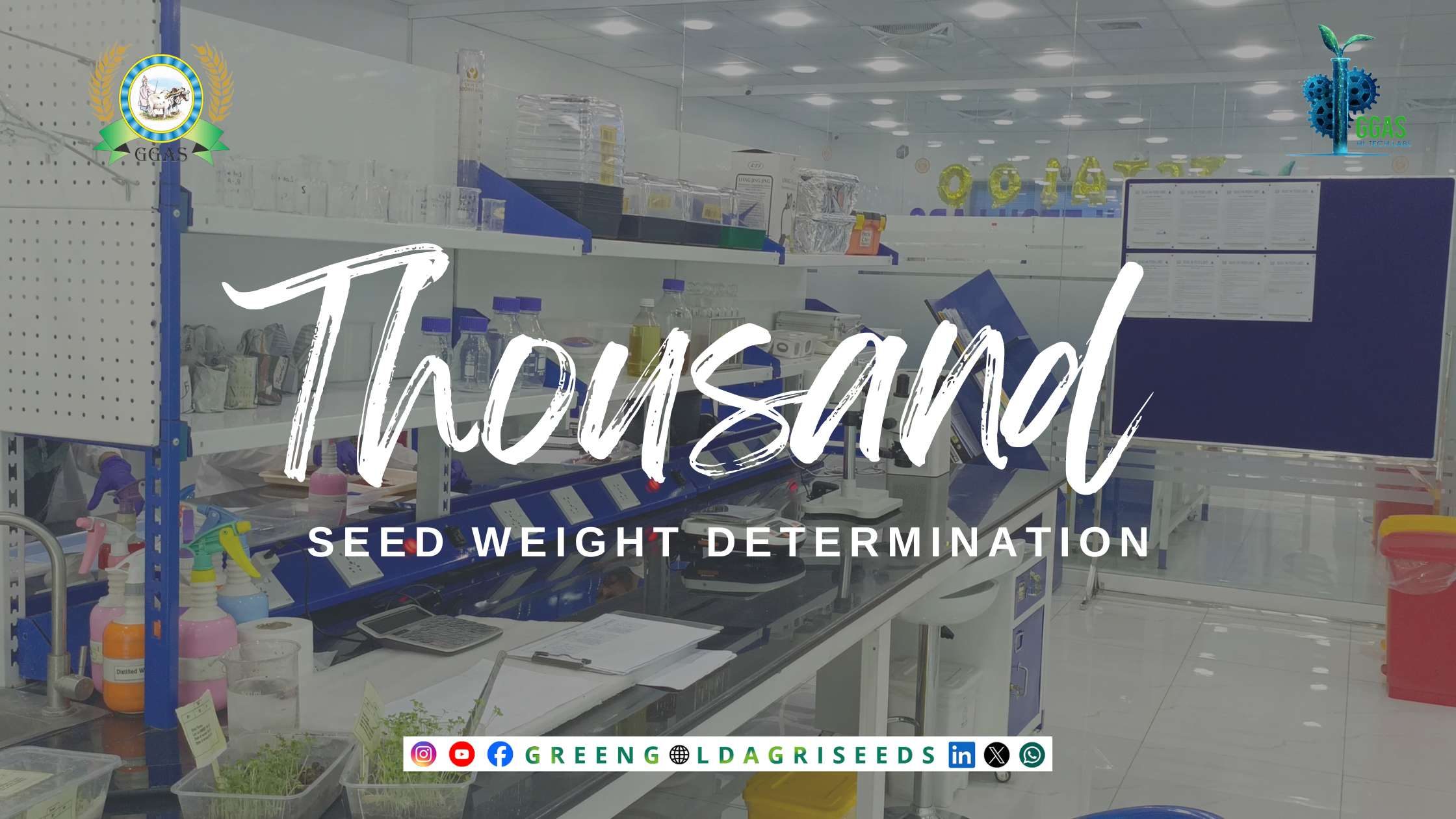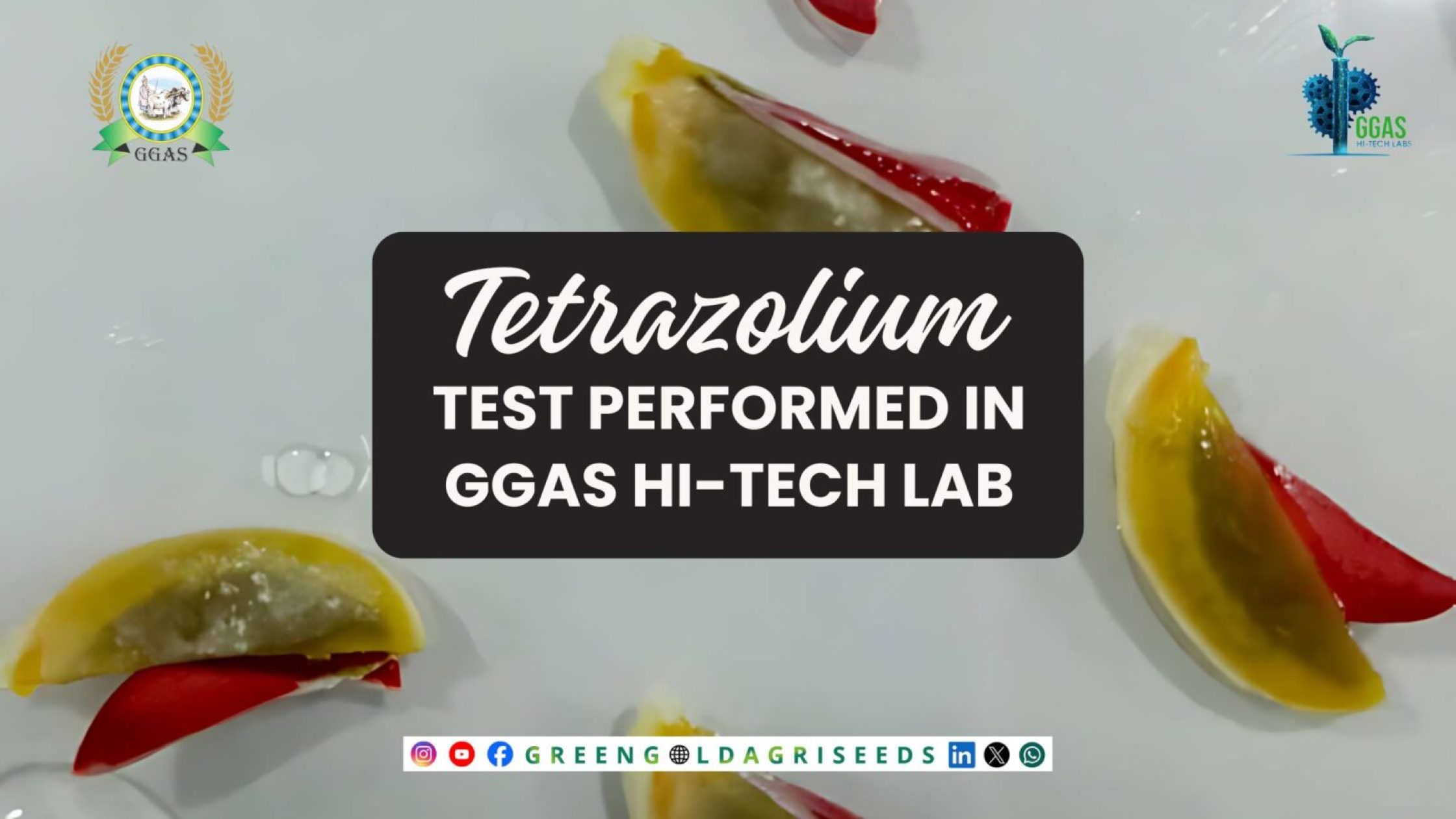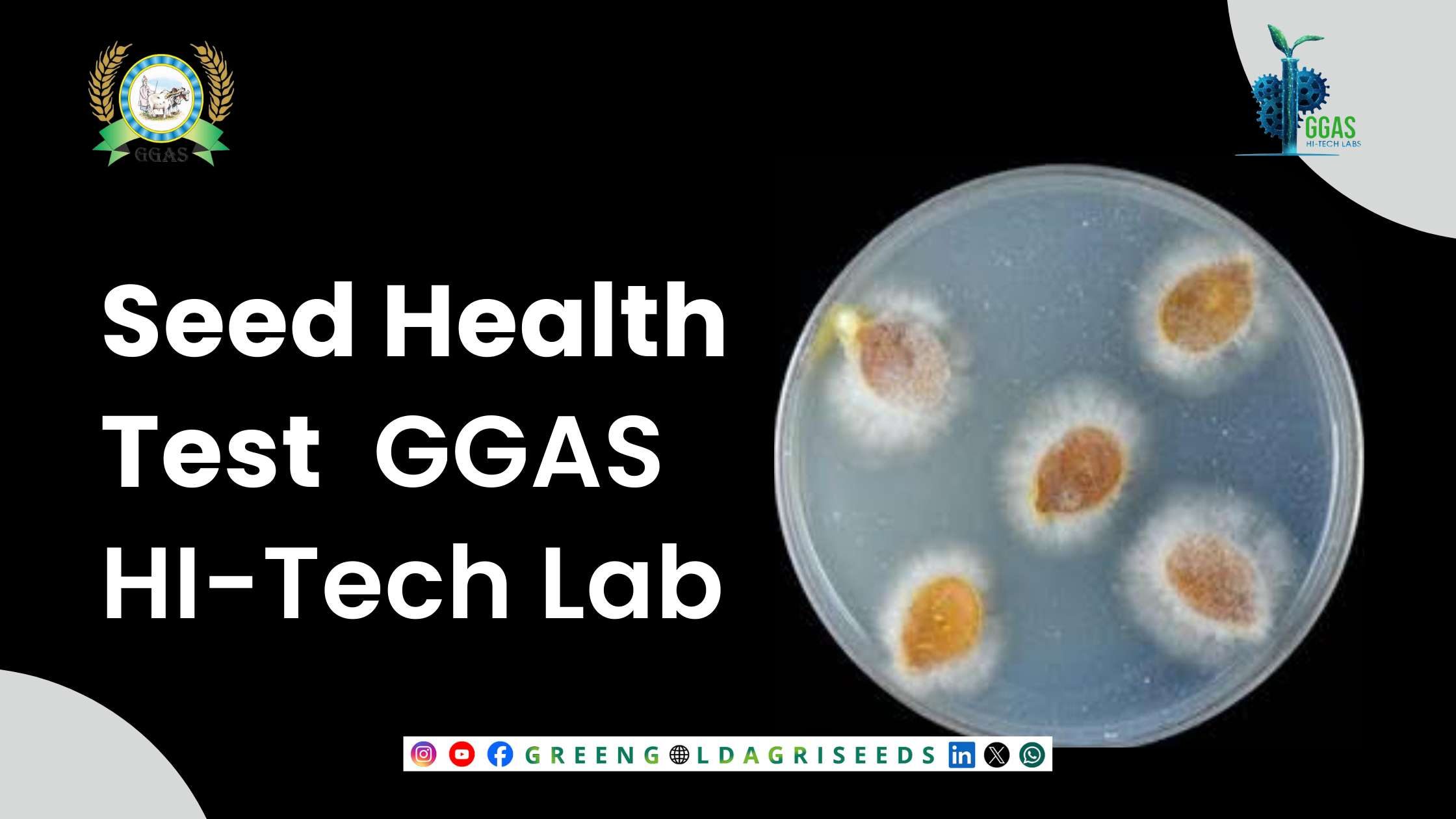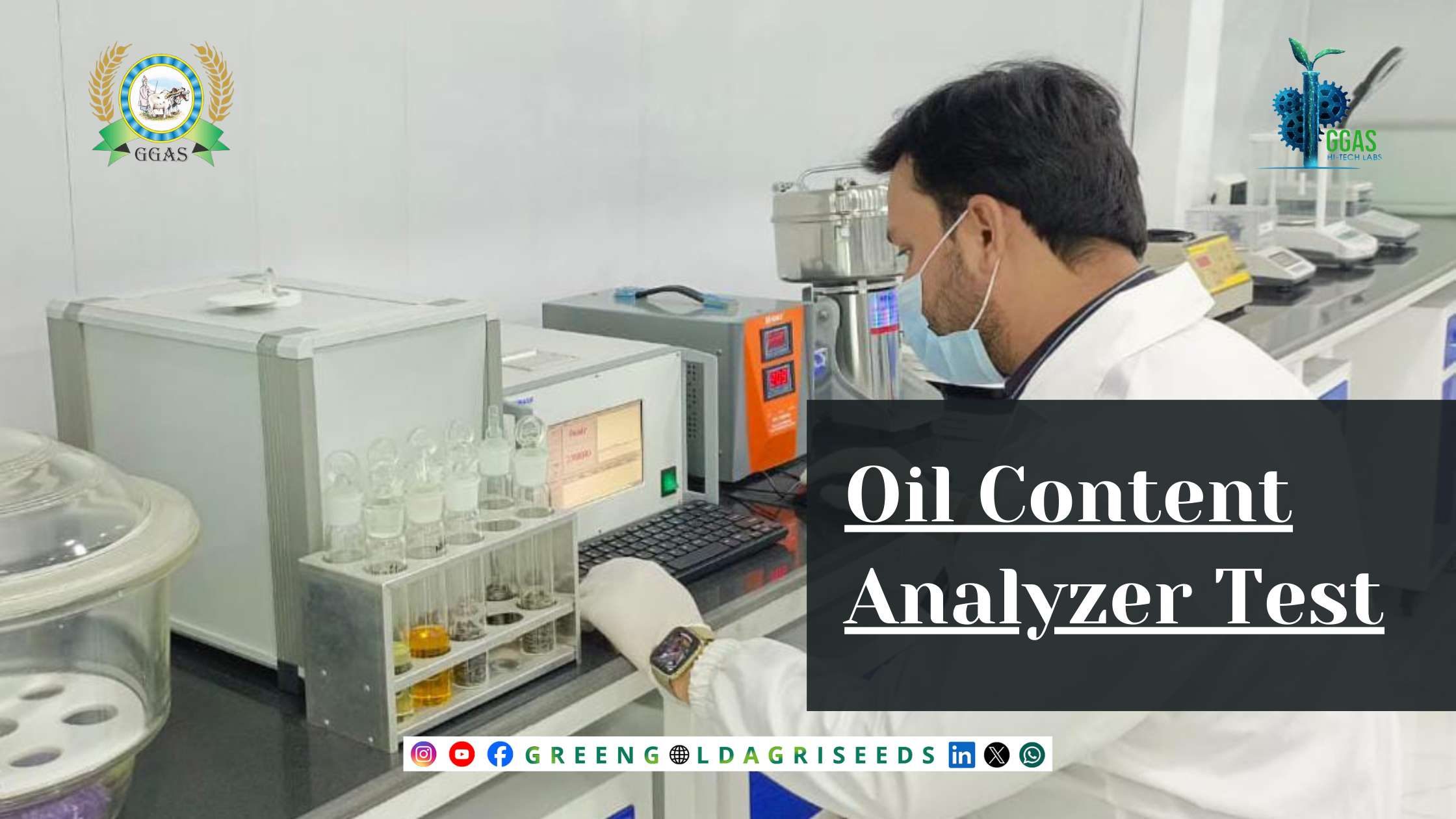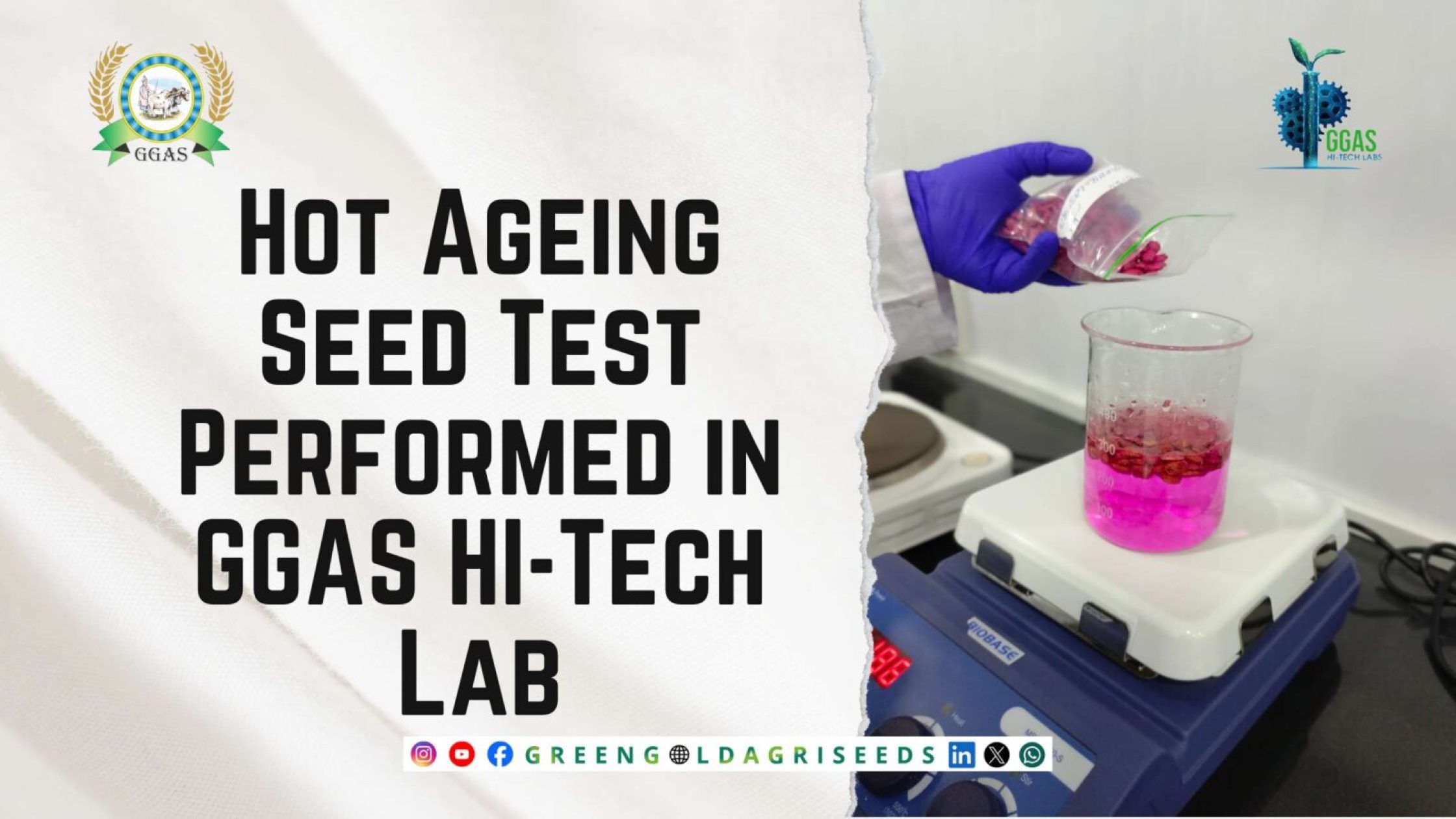No products in the cart.

Radical Emergence Seed Test Performed in GGAS HI-Tech Lab
In agricultural practice and seed testing, the radical emergence test is a critical assessment for evaluating a seed’s ability to establish a robust and healthy root system during the early stages of germination. This test measures the speed and consistency with which seeds develop radicles, providing valuable insights into their potential for root development. Effective root growth is essential for optimal nutrient uptake, water absorption, and overall plant health. Consequently, the radical emergence test is instrumental in determining the viability of seeds and their capacity to support healthy plant development.
PROTOCOL:
- To conduct the radicle emergence test according to ISTA, pre-sterilized brown papers are used. Seed sample is prepared and placed on brown paper, in a proper adjustment keeping an adequate distance in a line.
- This test can be performed either by between or top of paper method.
- The testing sample is then incubated under controlled conditions and monitored for radicle emergence.
- After 48h ± 15 min, the percentage of seeds with visible radicles of 2mm is calculated.
- The results are documented ensuring compliance with ISTA guidelines.
BENEFITS:
- The radicle emergence test performed at GGAS HI-TECH LAB according to ISTA rules can help farmers assess seed viability and predict early plant growth, improving seed selection and crop establishment, which enhances overall yield and reduces planting risks.
- It ensures seed quality by verifying germination potential, enhances compliance with international standards, increases buyer confidence, and helps provide accurate seed performance data, leading to smoother trade.




